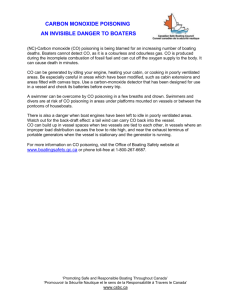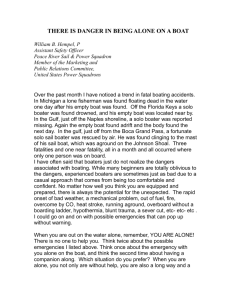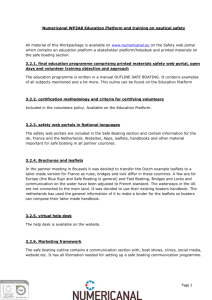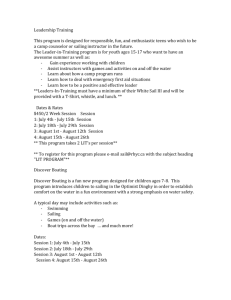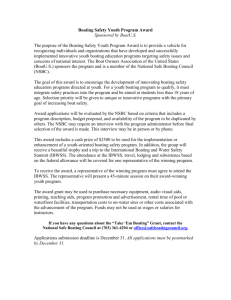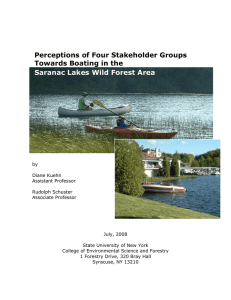Red Right - Canadian Safe Boating Council
advertisement
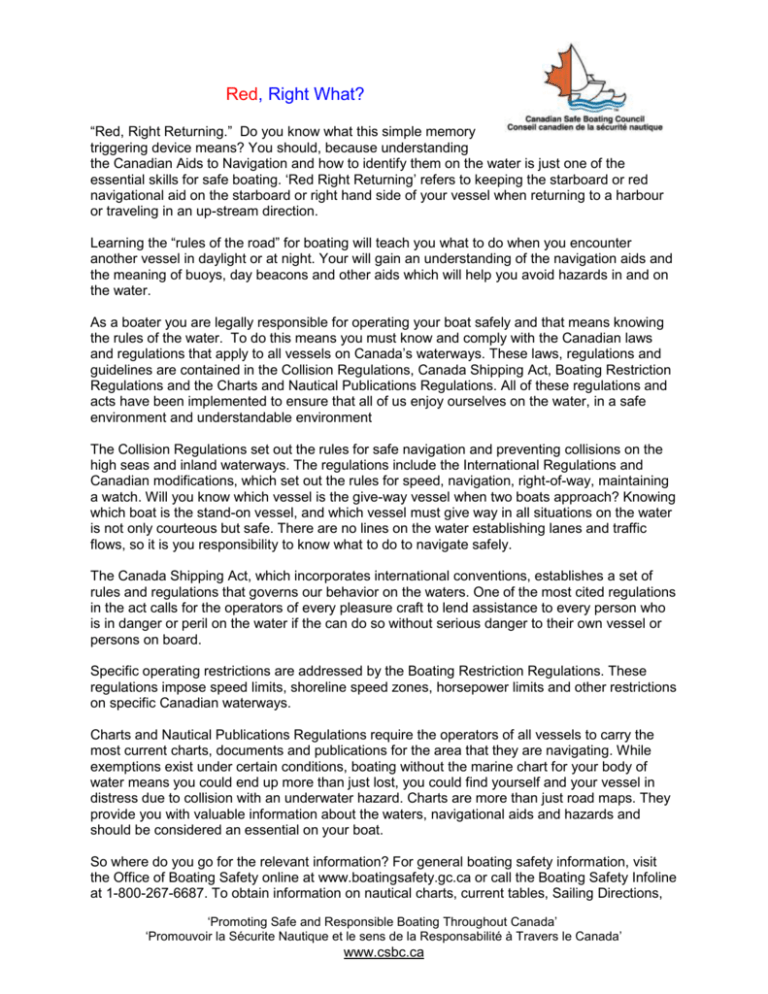
Red, Right What? “Red, Right Returning.” Do you know what this simple memory triggering device means? You should, because understanding the Canadian Aids to Navigation and how to identify them on the water is just one of the essential skills for safe boating. ‘Red Right Returning’ refers to keeping the starboard or red navigational aid on the starboard or right hand side of your vessel when returning to a harbour or traveling in an up-stream direction. Learning the “rules of the road” for boating will teach you what to do when you encounter another vessel in daylight or at night. Your will gain an understanding of the navigation aids and the meaning of buoys, day beacons and other aids which will help you avoid hazards in and on the water. As a boater you are legally responsible for operating your boat safely and that means knowing the rules of the water. To do this means you must know and comply with the Canadian laws and regulations that apply to all vessels on Canada’s waterways. These laws, regulations and guidelines are contained in the Collision Regulations, Canada Shipping Act, Boating Restriction Regulations and the Charts and Nautical Publications Regulations. All of these regulations and acts have been implemented to ensure that all of us enjoy ourselves on the water, in a safe environment and understandable environment The Collision Regulations set out the rules for safe navigation and preventing collisions on the high seas and inland waterways. The regulations include the International Regulations and Canadian modifications, which set out the rules for speed, navigation, right-of-way, maintaining a watch. Will you know which vessel is the give-way vessel when two boats approach? Knowing which boat is the stand-on vessel, and which vessel must give way in all situations on the water is not only courteous but safe. There are no lines on the water establishing lanes and traffic flows, so it is you responsibility to know what to do to navigate safely. The Canada Shipping Act, which incorporates international conventions, establishes a set of rules and regulations that governs our behavior on the waters. One of the most cited regulations in the act calls for the operators of every pleasure craft to lend assistance to every person who is in danger or peril on the water if the can do so without serious danger to their own vessel or persons on board. Specific operating restrictions are addressed by the Boating Restriction Regulations. These regulations impose speed limits, shoreline speed zones, horsepower limits and other restrictions on specific Canadian waterways. Charts and Nautical Publications Regulations require the operators of all vessels to carry the most current charts, documents and publications for the area that they are navigating. While exemptions exist under certain conditions, boating without the marine chart for your body of water means you could end up more than just lost, you could find yourself and your vessel in distress due to collision with an underwater hazard. Charts are more than just road maps. They provide you with valuable information about the waters, navigational aids and hazards and should be considered an essential on your boat. So where do you go for the relevant information? For general boating safety information, visit the Office of Boating Safety online at www.boatingsafety.gc.ca or call the Boating Safety Infoline at 1-800-267-6687. To obtain information on nautical charts, current tables, Sailing Directions, ‘Promoting Safe and Responsible Boating Throughout Canada’ ‘Promouvoir la Sécurite Nautique et le sens de la Responsabilité à Travers le Canada’ www.csbc.ca The Canadian Aids to Navigation System, Radio Aids to Marine Navigation and List of Lights, Buoys and Fog Signals visit www.charts.gc.ca/pub/en/products or call the Canadian Hydrographic Service at (613) 998-4931. It’s every boater’s responsibility to know the “rules of the road” and to Boat Safe – Return Safe. Enjoy your time on the water and “have many happy returns.” Safe boating is everybody’s responsibility and the best way to become a safe and confident boater is to take an accredited course. To learn more about the courses offered in Canada, where you can take them and how to get your Pleasure Craft Operators Card visit www.boatingsafety.gc.ca or call the Boating Safety Infoline at 1-800-267-6687 and remember……Boat Safe – Return Safe. Enjoy your time on the water and “have many happy returns.” ‘Promoting Safe and Responsible Boating Throughout Canada’ ‘Promouvoir la Sécurite Nautique et le sens de la Responsabilité à Travers le Canada’ www.csbc.ca
